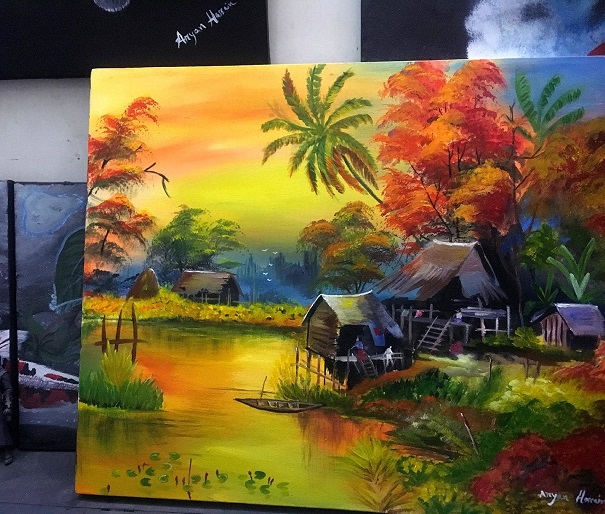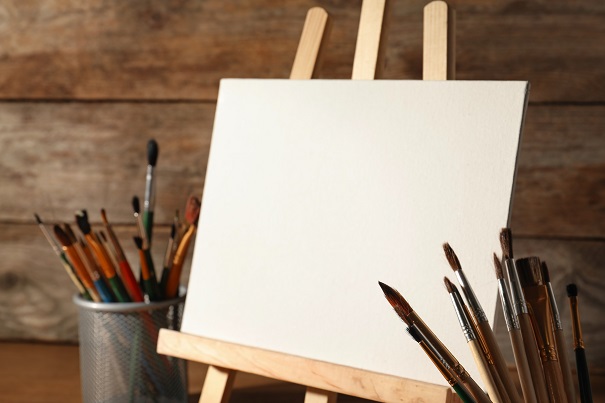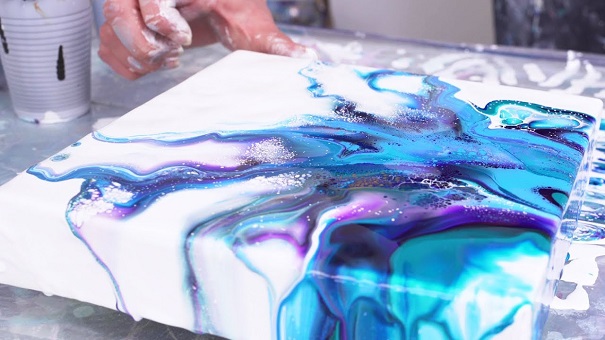Fluid Art: Discover the Ideal Painting Surface
One of the easiest ways to transform your home and give it a new look is by adding art to the otherwise dull and blank walls. Minimalist, Scandi, contemporary and modern homes, are all about incorporating modern abstract art pieces which are everything but not ordinary. And when speaking about art to decorate your home with, wouldn’t it be lovely if it’s something you yourself created?
Painting abstract art is a relaxing hobby that can also result in beautiful pieces you can decorate your walls with or simply gift to friends and family. And when it comes to painting for beginners, it seems that the fluid art technique is the most popular choice for many reasons.
What Is Fluid Art Painting?
Also known as flow art or acrylic pouring, fluid art painting is a form of abstract art that should be done with acrylic paints with a runny consistency. Since these paints are usually poured into a cup, they react with each other, forming free-flowing abstract compositions. But besides stocking on the essentials like acrylic paints, craft sticks, plastic cups, drop mat, etc., you will also need to choose the right painting surface. While there are many types of fluid art painting surfaces, canvas and wood are among the most commonly used.

Source: fiverr.com
Canvas Painting Surface
One of the main reasons why canvas for acrylic painting is the most popular surface is because of its lighter weight and paint-friendliness. It can also come in different sizes, but most importantly, quality canvas for acrylic painting is super absorbent and has a texture that can suit every fluid art painting style. In order to work more easily on it, it is recommended to get a canvas panel, however, there are many other types of canvas for fluid painting.
Back Stapled Canvas
This is a student quality canvas used for a different type of acrylic painting. It can come in pre-stretched and pre-gessoed varieties.
Gallery Wrapped Canvas
Higher in quality than the aforementioned type, this one can also be pre-stretched and pre-gessoed and the main difference is in the back. Its back is finished more carefully and elegantly, making it look more professional – perfect for creating wall art to decorate a home with.

Source: artnews.com
Canvas Board
The canvas boards are made of canvas that’s stretched over cardboard. When compared to the aforementioned types, the canvas boards are more affordable but not always the ideal option for every type of fluid art. They tend to wrap when moderate amounts of fluid are left on the board.
Canvas Sheets
As the name implies, canvas sheets come individually and they are not attached to any frame. Because of this, they are not the best choice for fluid art beginners.

Source: .youtube.com
Tips & Tricks When Using Fluid Paints on Canvas
Since larger canvases have the tendency to wrap inwards when large amounts of heavy paints are added to the canvas, you can avoid this by letting more paint run off the sides of the canvas. You can add some additional support under the canvas while pouring or during the drying cycle.
How to Prime Your Canvas
Priming the canvas before painting is essential as the prime seals and protects the support while making the canvas less absorbent. That way the colours can stand out. Although priming the canvas only involves gesso, there are some things you should know to obtain the desired results.
How to Paint with Acrylic Paint on Canvas for Beginners
The reason why so many artists love working with acrylic paints is that they are easy to work with and can give some amazing results. And besides setting up the painting station and stocking up on brushes and paints, you should follow some of the basic acrylic painting steps and practice. You know what they say, practice is the key to success.
Wooden Painting Surface
The reason why wood is another good surface for fluid art is its stability. Besides this, it gives you the freedom to cut it into different shapes and create personalised art shapes. One of the most common wood pieces for this art technique is the precut balsa and pine wood. The larger sheets of plywood are also a common choice and can be found in most home improvement stores. The cross-section slab cuts with a natural bark outer edge are also a popular choice since they can create a contrast to the acrylic paint, making it look more appealing.

Source: thespruce.com
Other Less-Common Types of Painting Surfaces
Tile
Ceramic tiles are a good choice for most fluid acrylic painters since they are great for small decorative art pieces such as coasters. The most important thing when pouring paint on tiles is to prepare the surface. A layer of gesso or some other primer might be needed for better results.
Glass Painting Surface
Painting on glass is not something new. This technique has been around since forever, and nowadays, more and more painters are using glass for fluid painting. But just like tiles, glass might also need a priming layer for a better art display.
Paper Painting Surface
Although strange, there are some papers that can be used for acrylic painting. Sketch pad, pastel, watercolour, yupo, easel and mixed media papers can all be great for fluid painting. When painting on paper make sure to attach it on a harder surface to prevent it from wrapping inwards.